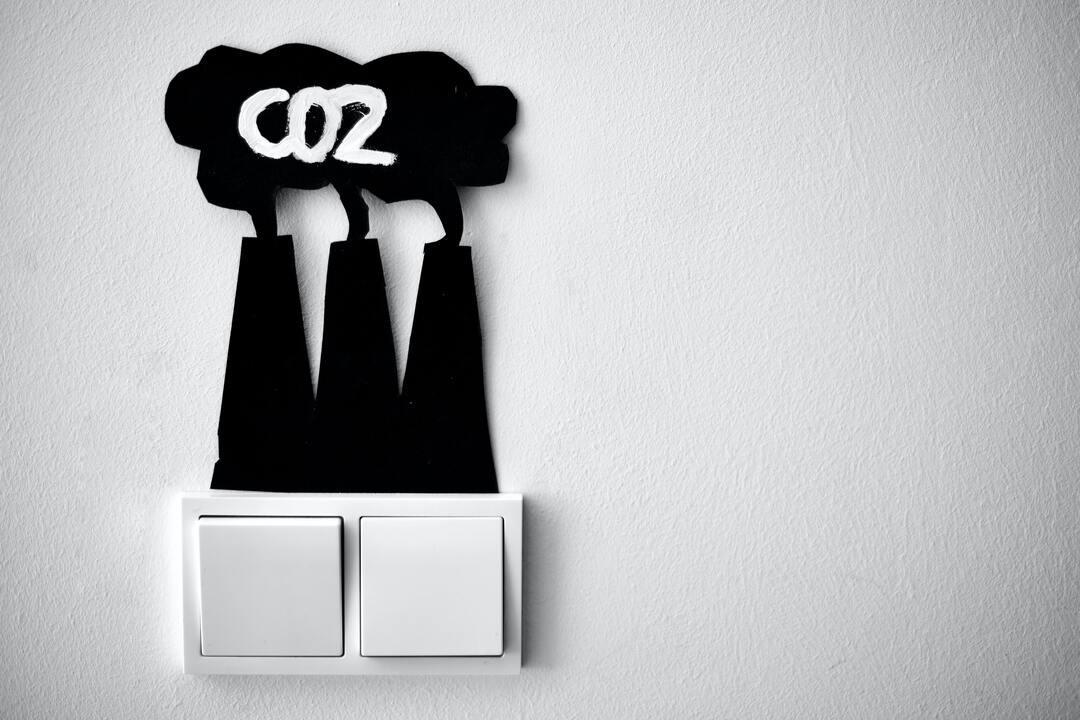According to the provisions of the Law on Environmental Protection 2020, in the near future, nearly 1200 businesses in many industries and fields will have to provide operational data and relevant information for their greenhouse gas (GHG) inventory under the guidance of the field management ministry before March 31, 2023. This is considered as the first step of enterprises if they want to be recognized for their results of GHG emission reduction and environmental protection.
1,192 establishments subject to GHG inventory
According to Mr. Ha Quang Anh – Director of the Center for Low Carbon Development, Department of Climate Change – MONRE, the Prime Minister has issued Decision No. 01/2022/QD-TTg on the list, fields, GHG-emitting establishments must carry out a GHG inventory. According to the roadmap for the implementation of the inventory report, 1,192 facilities in 6 areas: Energy, transportation, construction, industrial processes, agro-forestry and land use and waste will have to provide activity data and relevant information for the 2022 GHG inventory at the beginning of 2023. This work continues to be carried out every year.

From 2024 enterprises will prepare a grassroots GHG inventory report every 2 years
From 2024 onwards, enterprises will organize a grassroots GHG inventory, develop a grassroots GHG inventory report Department once every 2 years, send it to the Provincial People’s Committee for appraisal and send it to the Ministry of Natural Resources and Environment.
Enterprises also need to develop a GHG emission reduction plan for the period 2026 – 2030. From 2027, enterprises will have to send a report on GHG emission reduction results to the governing ministry and the Ministry of Natural Resources and Environment. This is the basis for the State to allocate GHG emission quotas as well as update and adjust the list of large emitters every 2 years.
At the establishment level, enterprises need to define the scope of emission sources and GHG inventory methods for GHG emission and sequestration sources from the establishment’s activities. Recently, the Ministry of Natural Resources and Environment in collaboration with the Ministry of Construction organized the first training course for enterprises in the cement sector on inventory and reporting methods. According to Mr. Ha Quang Anh, the most important principle in GHG inventories is transparency, with documents specifying the data source, assumptions, processes and methodology used. Activity data for each grassroots GHG emission and sequestration activity is based on the guidance of the Global GHG Protocol and is specified in the Circular on sector-specific technical regulations managed by the Ministry of Industry and Trade.
Particularly for the first GHG inventory for the base year 2022, the sector management ministry will issue a document guiding the establishments under its management to collect and provide data before January 31, 2023. .
Regarding appraisal, in Vietnam today, the Center for Low Carbon Development under the Department of Climate Change is one of the units eligible to carry out measurement, reporting and appraisal (MRV) activities. mitigation of greenhouse gas emissions. These methods ensure accuracy and transparency on the basis of regulations of the United Nations and Vietnam.
Opportunities to participate in the carbon market
Emission-reducing enterprises have the opportunity to participate in the domestic carbon market and carry out domestic and international credit exchange projects. Around the world, up to now, 46 countries and 35 territories have applied carbon pricing tools (including the carbon market) with the participation of tens of thousands of corporations and businesses. Revenue in 2020 is about 50 billion USD and especially has managed about 13 billion tons of CO2, equivalent to about 23% of total global emissions.
According to Clause 1, Article 6 of Decree 06/2022/ND-CP stipulating the mitigation of GHG emissions and the protection of the ozone layer, establishments subject to GHG inventory include: Establishments emitting annual emissions of ≥ 3,000 tons of CO2 equivalent; Thermal power plants, industrial production facilities with total energy consumption of ≥ 1,000 tons of oil equivalent (TOE); Cargo transportation company with total annual fuel consumption ≥ 1,000 TOE; Commercial buildings with total annual energy consumption ≥ 1,000 TOE; Solid waste treatment facilities with an annual operating capacity of ≥ 65,000 tons.
Vietnam is expected to pilot the operation of a carbon credit exchange from 2025 and officially operate from 2028 to connect and exchange domestic carbon credits with the regional carbon market and world. According to Dr. Nguyen Van Minh (Department of Climate Change), two items of the carbon market are carbon credits and emission quotas. Carbon credits are obtained from corporate emissions reduction activities and are certified by credit issuance mechanisms. The greenhouse gas emission quotas are allocated by the State to enterprises. When enterprises emit more than the threshold, they can buy more quotas issued by the State, or from other subjects who are also granted quotas but do not use them all. That is the buyer – seller of the carbon market.
Read more: Towards low-carbon urban development
Dr. Nguyen Van Minh said that, in order to enjoy the benefits from the market, businesses need to actively learn the legal regulations on GHG emission reduction and the carbon market. In particular, it is necessary to strengthen capacity on GHG inventory and implementation of GHG emission reduction activities, mechanism of exchange and offset of carbon credits.
Given that green growth is an urgent requirement of current practice, Dr. Ta Dinh Thi – Vice Chairman of the National Assembly’s Committee on Science, Technology and Environment, said that in the global value chain, green growth goals have been concretized by regulations and criteria that need to be met. in many new generation trade agreements (FTAs) bilateral and multilateral that Vietnam has joined and signed. And therefore, the success stories and leading this trend will belong to economies, localities, businesses and people who know how to catch it early and act now.
Source: Báo Tài nguyên & Môi trường


Recent Comments